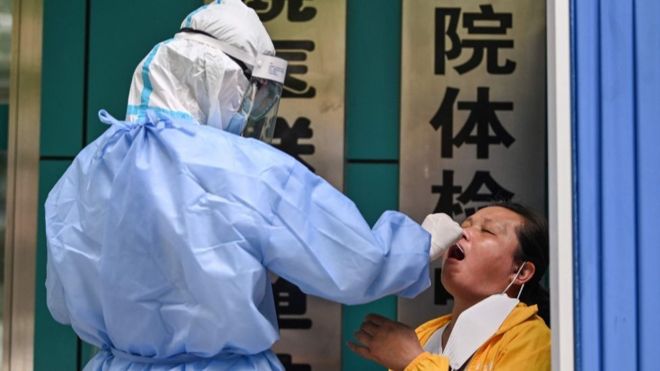China is drawing up ambitious plans to test the entire population of Wuhan, the city where the Covid-19 pandemic began.
The announcement came after the emergence of six new coronavirus cases in the city – the first ones since early April.
The authorities had originally promised to test all 11 million people in 10 days.
But it now appears they might be aiming for a less ambitious timetable.
How long will the testing take?
In late April, the Hubei provincial government reported 63,000 people were being tested in Wuhan every day.
And by Sunday, 10 May, that had dropped to just under 40,000.
There are more than 60 testing centres across the city, according to the official Hubei Daily newspaper.
These have a maximum capacity of 100,000 tests a day at most, making it hard to see how the target of testing the entire population in 10 days could be met.
So the authorities have indicated the tests will not all start and finish within the same 10-day period.
“Some districts [in the city] will start from 12 May, others from 17 May, for example,” the Wuhan Centre for Disease Control said.
“Each district finishes its tests within 10 days from the date it started.”
But, according to a Reuters report on 13 May, preparations have begun in just two the city’s 13 districts.
What proportion have been tested already?
As of 14 May, 2.7 million people in the city had already been tested, according to the local media.
But Wuhan University pathogen biology department deputy director Yang Zhanqiu told the Global Times newspaper he believed between three and five million Wuhan residents had already been tested.
The population of the city – originally 11 million – has also fluctuated.
The authorities said up to five million people had left the city for the lunar New Year before it was locked down, on 23 January.
The lockdown then lasted until 8 April.
And it is unclear how many have returned.
Should everyone be tested?
Wuhan University’s Yang Zhanqiu said there was no need to test every resident in neighbourhoods with no reported cases.

The authorities have said they will begin with people considered most at risk – for example in the older, more densely populated areas, as well as those in key jobs such as healthcare.
Also, people who have been tested in the previous seven days will not need to be tested again.
But Chinese Center for Disease Control and Prevention chief epidemiologist Wu Zunyou told state TV: “The virus could take longer to manifest itself in patients with weak immunity and these people are also prone to ‘on’ and ‘off’ symptoms.”
Yang Zhanqiu adds: “You’ll never know if people were infected after testing negative.”
And US-based Council for Foreign Affairs senior fellow for global health Yanzhong Huang said: “There would still be the possibility of isolated outbreaks in the future, which even large-scale testing will not address.”


